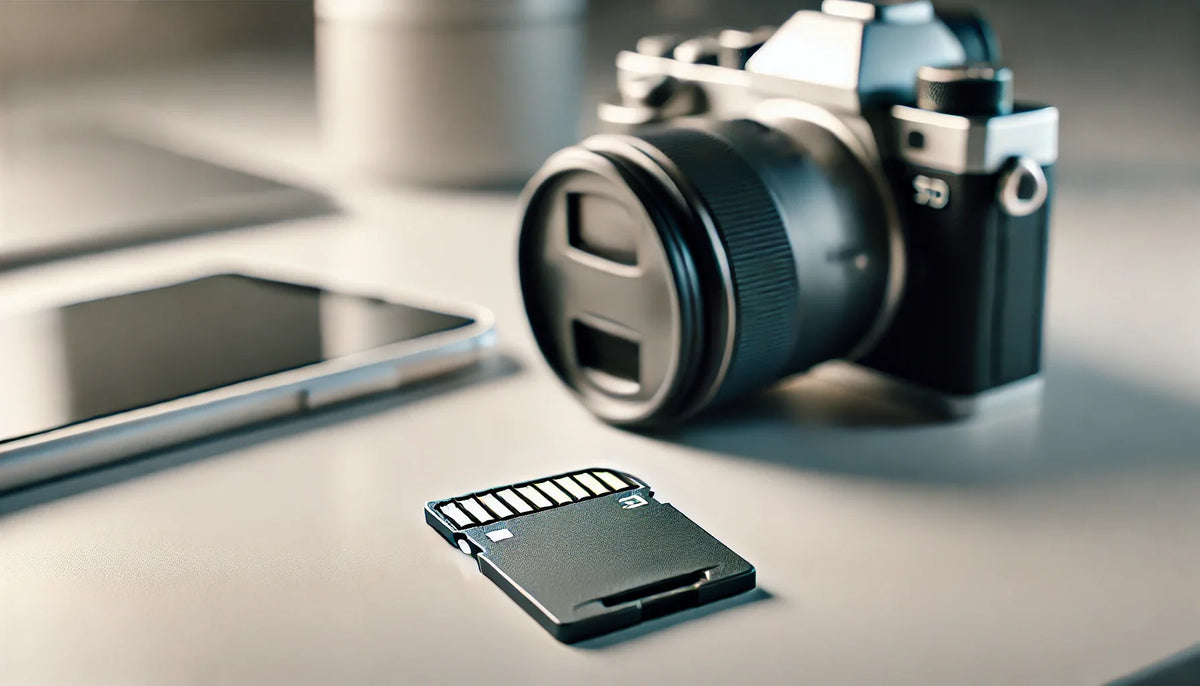
What Do You Need To Know About Memory Cards?
|
|
Time to read 4 min
|
|
Time to read 4 min
Memory cards are essential tools in our daily digital lives, providing the storage we need for everything from photos and videos to applications and documents. Whether you’re a photographer, a gamer, or just someone who loves to capture memories on your smartphone, understanding memory cards can help you make the best choices for your devices. Here’s everything you need to know about memory cards.
Memory cards come in various formats, each designed for specific uses. The most common types include:
Memory cards come in various storage capacities, typically ranging from a few gigabytes (GB) to several terabytes (TB). When selecting a card, consider how much storage you need:
Smaller capacities, such as 8GB or 16GB, are often sufficient for basic tasks like storing photos, music, or documents, making them ideal for casual users or older devices. Medium capacities, like 32GB or 64GB, are great for photography enthusiasts and mobile users, allowing for ample space for high-resolution images and apps. Larger capacities, such as 128GB, 256GB, and beyond, cater to professionals and content creators who require extensive storage for 4K video, large project files, and gaming data. Choosing the right capacity depends on your specific use case, ensuring you have enough space for your needs without sacrificing portability or performance.
Memory card speed is crucial for performance, particularly when capturing high-quality images and videos. The speed class indicates the minimum write speed of the card:
Speed classes on memory cards indicate their performance capabilities, specifically in terms of data transfer rates, which are crucial for various applications. The most common classes include Class 2, 4, 6, and 10, with higher numbers representing faster speeds—Class 10 cards support a minimum write speed of 10 MB/s. Additionally, UHS (Ultra High Speed) ratings, such as U1 and U3, further classify the speed of the memory card, with U3 cards supporting a minimum of 30 MB/s, ideal for recording 4K video or capturing high-resolution images in burst mode. For everyday use, Class 10 cards suffice for photography and casual video recording, while UHS cards are recommended for professional videography, high-resolution imaging, and gaming applications where rapid data access is crucial. Understanding these classes ensures you choose the right card for your specific needs, maximizing both performance and reliability.
Before purchasing a memory card, ensure it’s compatible with your device. Check the specifications of your camera, smartphone, or tablet to find out which card formats are supported. Additionally, consider the maximum capacity your device can handle, as some older devices may not support higher-capacity cards.
Memory cards are built to withstand different conditions, but some are more robust than others. Look for cards that offer features such as:
Together, these features make such memory cards reliable options for photographers, travellers, and anyone who needs to safeguard their data against harsh elements. Always back up important data to ensure you don’t lose valuable memories due to card failure.
To extend the life of your memory card and prevent data loss:
Memory cards are more than just storage devices; they are essential for preserving your digital life. By understanding the types, capacities, speed classes, compatibility, and care tips for memory cards, you can make informed choices that suit your needs. Whether you’re capturing family moments, gaming, or managing data, the right memory card will ensure your important information is stored safely and efficiently.
Ready to start storing your data? Check out our Memory Cards range!
An avid gamer from a young age, Jon has dabbled in gaming journalism and dedicates much of his spare time to this hobby. He also has an interest in music, playing bass guitar in a rock covers band.
Having previously worked as a copywriter with another electronics retailer, he was eager to join Maplin with their new online venture. In addition to writing blogs, Jon also works on many of the website's landing pages and adding new tech to the range.